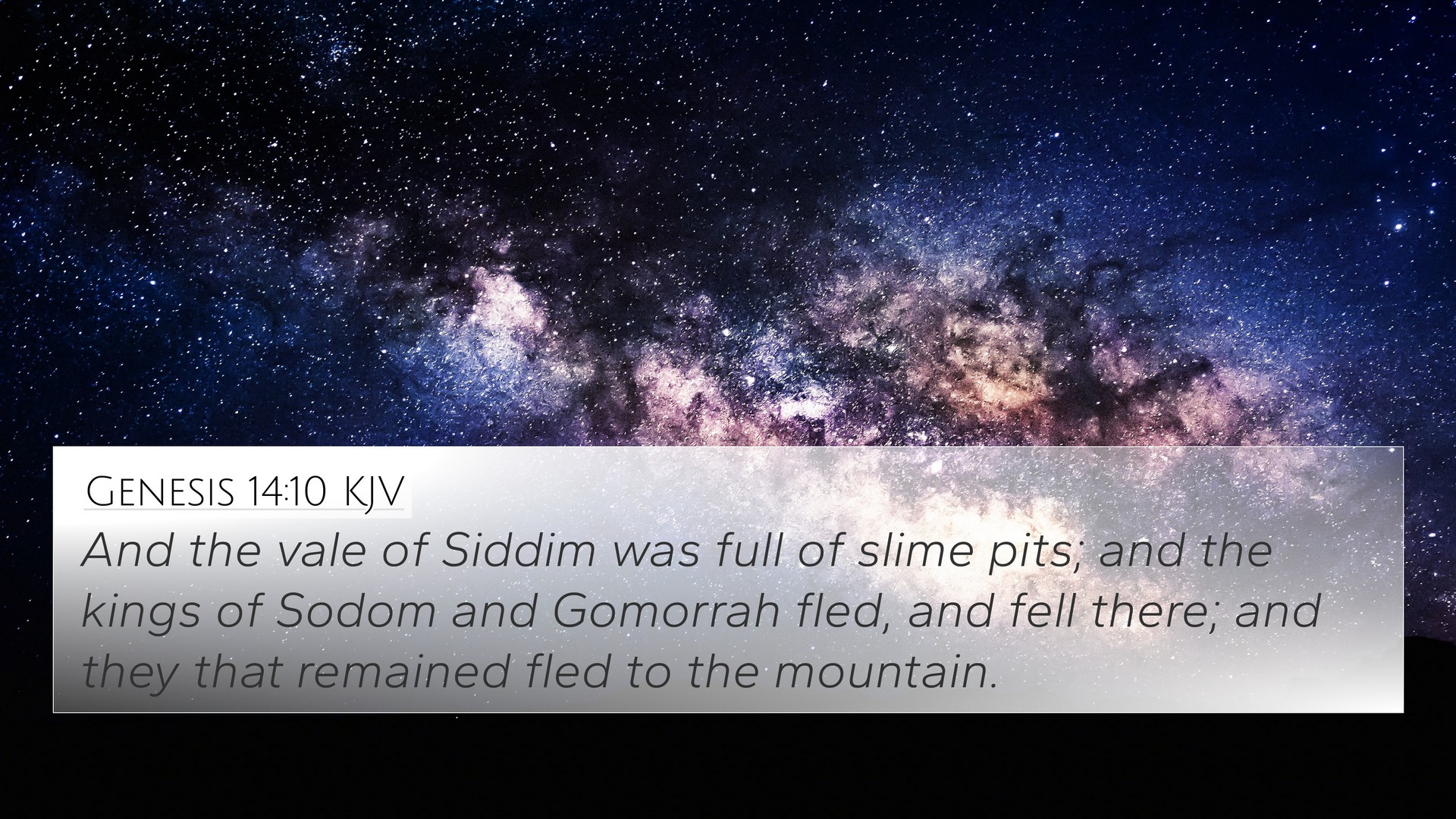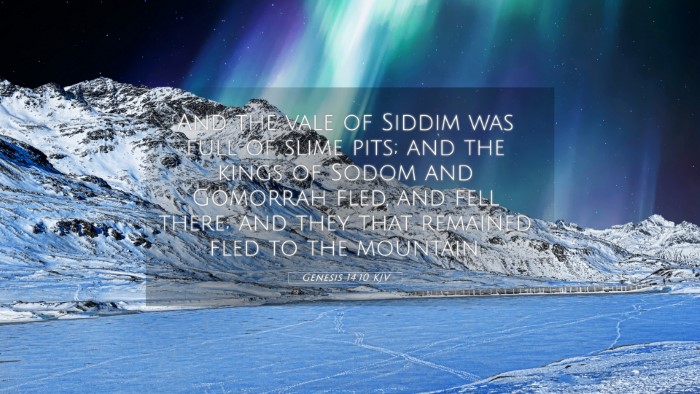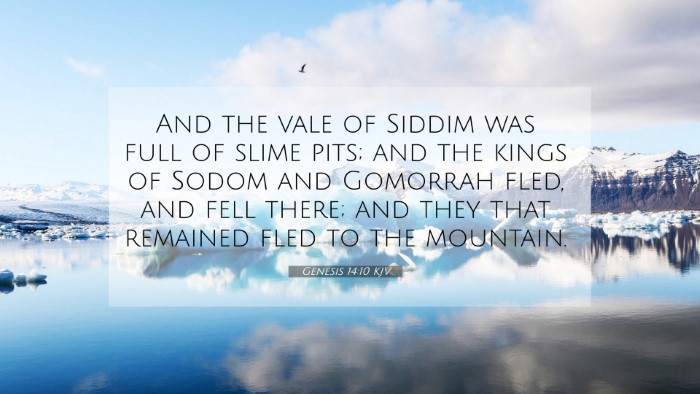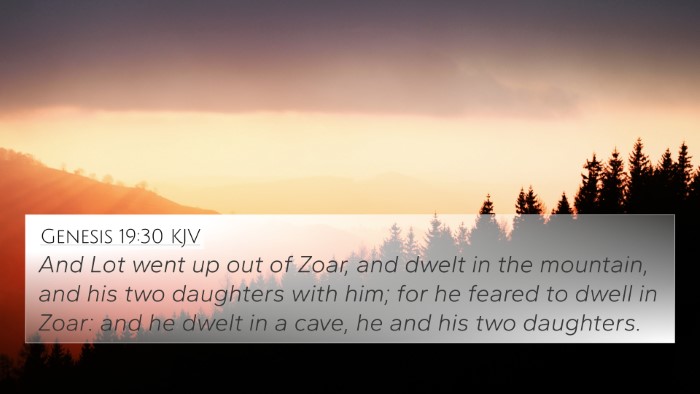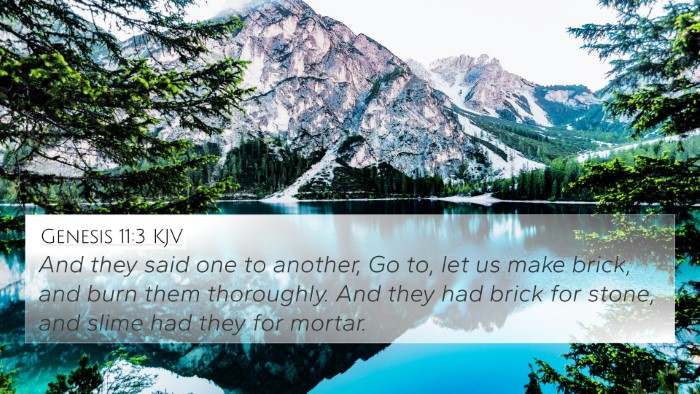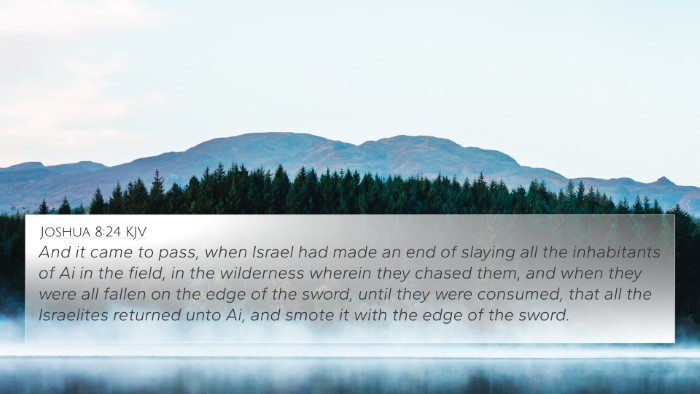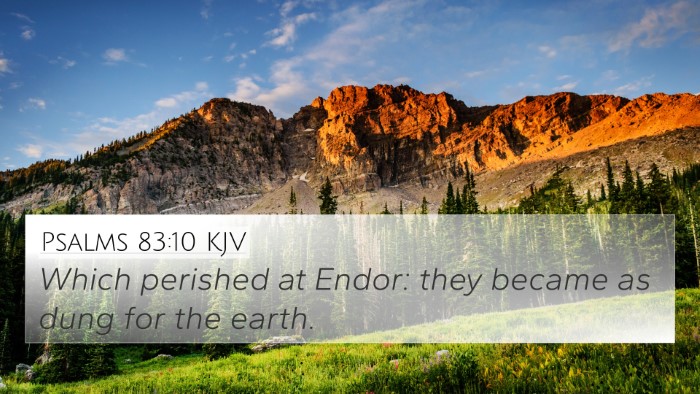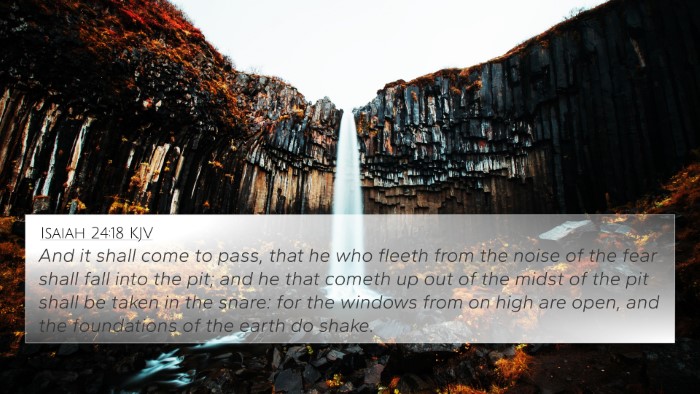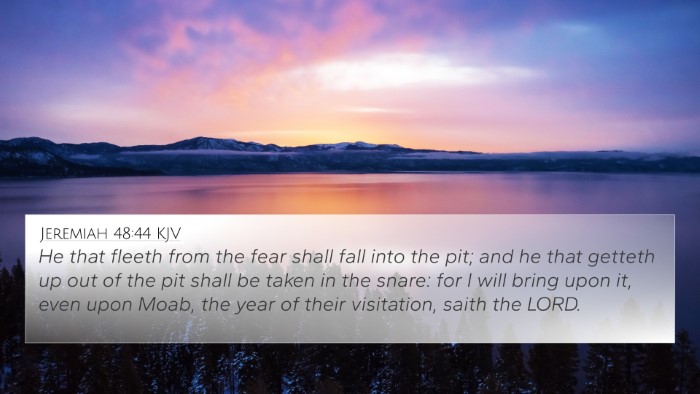Understanding Genesis 14:10
Genesis 14:10 states: "Now the valley of Siddim was full of asphalt pits. And the kings of Sodom and Gomorrah fled; some fell there, and the remainder fled to the mountains."
Context and Summary
This verse occurs in the narrative of a conflict between various kings during the time of Abraham. The valley of Siddim, known for its perilous asphalt pits, plays a significant role in the battle that ensues between the kings. The verse highlights the fate of the kings of Sodom and Gomorrah as they attempt to escape but face dire circumstances.
Commentary Insights
- Matthew Henry's Commentary:
Henry highlights the strategic importance of the valley of Siddim and explains how its natural hazards contributed to the downfall of the Sodomite kings. He underscores that God's will is manifested through such events, allowing for the divine purpose to unfold, particularly concerning Abraham and Lot.
- Albert Barnes' Notes:
Barnes emphasizes that the “valley of Siddim” represents a place of ruin for those who were corrupt. His analysis connects the physical danger of the asphalt pits to the spiritual condition of Sodom and Gomorrah, suggesting that their moral failures led to their demise in this treacherous location.
- Adam Clarke's Commentary:
Clarke provides a detailed exploration of the geographical context of Siddim and notes how familiarity with such locations helps us understand the gravity of the disaster that befell the kings. He also reflects on broader themes of judgment and the consequences of sin.
Thematic Connections
This verse presents a profound opportunity for thematic exploration and cross-referencing with several other Bible verses:
- Genesis 19:24-25: The destruction of Sodom and Gomorrah serves as a direct consequence of their moral decay, akin to the fate of the kings fleeing in Genesis 14:10.
- Exodus 14:28: The drowning of Pharaoh's army parallels the chaos and danger depicted in the flight of the Sodomite kings, highlighting God's hand in judgment against wickedness.
- Numbers 21:21-35: The confrontation with Sihon and Og illustrates divine provision and protection for the people of Israel, contrasting with the fate of those lost in the battle at Siddim.
- Psalms 11:6: This verse references the judgment of the wicked, thematic with the fate of the kings of Sodom, reminding readers of divine justice.
- Revelation 14:10: An apocalyptic context, where the fate of the wicked is sealed in terms similar to the fate of Sodom and Gomorrah, reinforcing the theme of unavoidable divine judgment.
- Romans 1:18: The wrath of God against unrighteousness echoes the moral decline of Sodom, showing a consistent biblical theme regarding the consequences of sin.
- Matthew 10:15: Jesus’ warning about the judgment to come for those who reject the message parallels the inescapable fate of the Sodomite kings.
Formatting Biblical Connections
When studying the connections between these verses and Genesis 14:10, one can use various tools for Bible cross-referencing:
- Bible Concordance: This can help in locating terms and themes across the Scriptures.
- Bible Cross-Reference Guide: Such guides assist in tracing similar ideas and events throughout the Bible.
- Cross-reference Bible Study: This method allows for deeper examination of related texts, enhancing understanding.
Applying the Insights
In applying the insights from Genesis 14:10, believers are reminded to contemplate the consequences of sin while recognizing God’s sovereignty in judgment. The narrative invites personal reflection on moral choices and community integrity.
Conclusion
Genesis 14:10, as interpreted through the lenses of Henry, Barnes, and Clarke, serves as a cautionary tale about the hazards of moral decay and the inevitable divine judgment. By cross-referencing with related scriptures, we deepen our understanding of the themes of justice, righteousness, and God's overarching plan for humanity. This encourages readers to engage deeply with their Bible study through resources like concordances and cross-reference systems.
